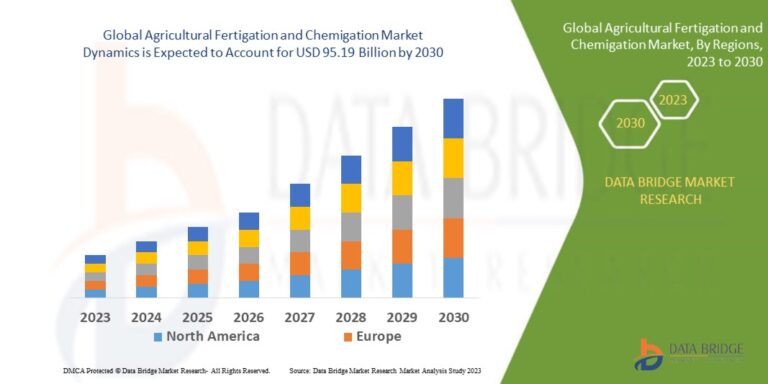The agricultural fertigation and chemigation market is rapidly evolving as modern farming techniques increasingly emphasize efficiency, sustainability, and precision. By integrating fertilizers and chemicals into irrigation systems, these practices offer farmers the ability to optimize resource use, improve crop yields, and minimize environmental impacts.
Market Overview
Fertigation refers to the process of delivering fertilizers through irrigation systems, while chemigation involves applying pesticides, herbicides, and other agricultural chemicals via the same method. Together, these techniques provide a systematic approach to crop management, ensuring that nutrients and protection agents reach plants efficiently.
The global agricultural fertigation and chemigation market is projected to grow significantly over the next decade, driven by increasing population demands, advancements in irrigation technology, and the need for sustainable farming practices. As farmers adopt precision agriculture and water management strategies, the demand for these techniques is expected to expand further.
Key Drivers
- Rising Demand for Food Production:
- A growing global population requires higher food production, prompting farmers to adopt methods that enhance productivity and reduce waste.
- Water Scarcity and Efficiency Needs:
- With water resources becoming scarcer, technologies that maximize water use, such as fertigation and chemigation, are gaining traction.
- Technological Advancements:
- Innovations in irrigation systems, including drip and sprinkler irrigation, have improved the efficiency of nutrient and chemical delivery.
- Sustainable Agriculture Practices:
- Environmental concerns are pushing the agriculture sector toward methods that reduce chemical runoff and improve soil health.
Market Segmentation
The agricultural fertigation and chemigation market can be segmented based on product type, application method, crop type, and region:
- By Product Type:
- Fertilizers
- Herbicides
- Insecticides
- Fungicides
- Others
- By Application Method:
- Drip Irrigation
- Sprinkler Irrigation
- Others
- By Crop Type:
- Field Crops
- Horticultural Crops
- Plantation Crops
- Others
- By Region:
- North America
- Europe
- Asia-Pacific
- Latin America
- Middle East & Africa
Regional Insights
- North America: The adoption of precision agriculture and advanced irrigation systems positions North America as a leading market. The United States and Canada are significant contributors, with large-scale farms integrating fertigation and chemigation systems.
- Asia-Pacific: This region is expected to witness the highest growth rate due to the presence of emerging economies like India and China, where agriculture plays a crucial role in the economy. Increasing government initiatives for modern farming practices further drive market growth.
- Europe: Europe’s strong focus on sustainable farming and environmental protection supports the adoption of these techniques. Countries such as Germany, France, and the Netherlands are key players in this market.
- Latin America and Middle East & Africa: These regions hold significant growth potential due to the expansion of agricultural activities and increasing awareness of efficient irrigation methods.
Challenges
- High Initial Investment:
- The cost of installing advanced fertigation and chemigation systems can be prohibitive for small-scale farmers.
- Technical Expertise:
- Proper operation of these systems requires a level of expertise that may not be readily available in all regions.
- Regulatory and Environmental Concerns:
- Mismanagement of chemical applications could lead to environmental pollution, attracting stringent regulations.
Future Outlook
The agricultural fertigation and chemigation market is poised for robust growth, driven by increasing technological advancements and a shift toward sustainable agriculture. Companies operating in this sector are focusing on product innovation, training programs, and partnerships with governments to encourage adoption among farmers. As climate change and water scarcity issues intensify, the importance of efficient farming techniques will only grow.
Get More Links : https://www.databridgemarketresearch.com/reports/global-agricultural-fertigation-and-chemigation-market
Conclusion
Fertigation and chemigation represent the future of agricultural innovation, offering a pathway to increased productivity and sustainability. As farmers and policymakers continue to seek solutions to global food security challenges, these methods are likely to play a pivotal role in transforming the agricultural landscape.

